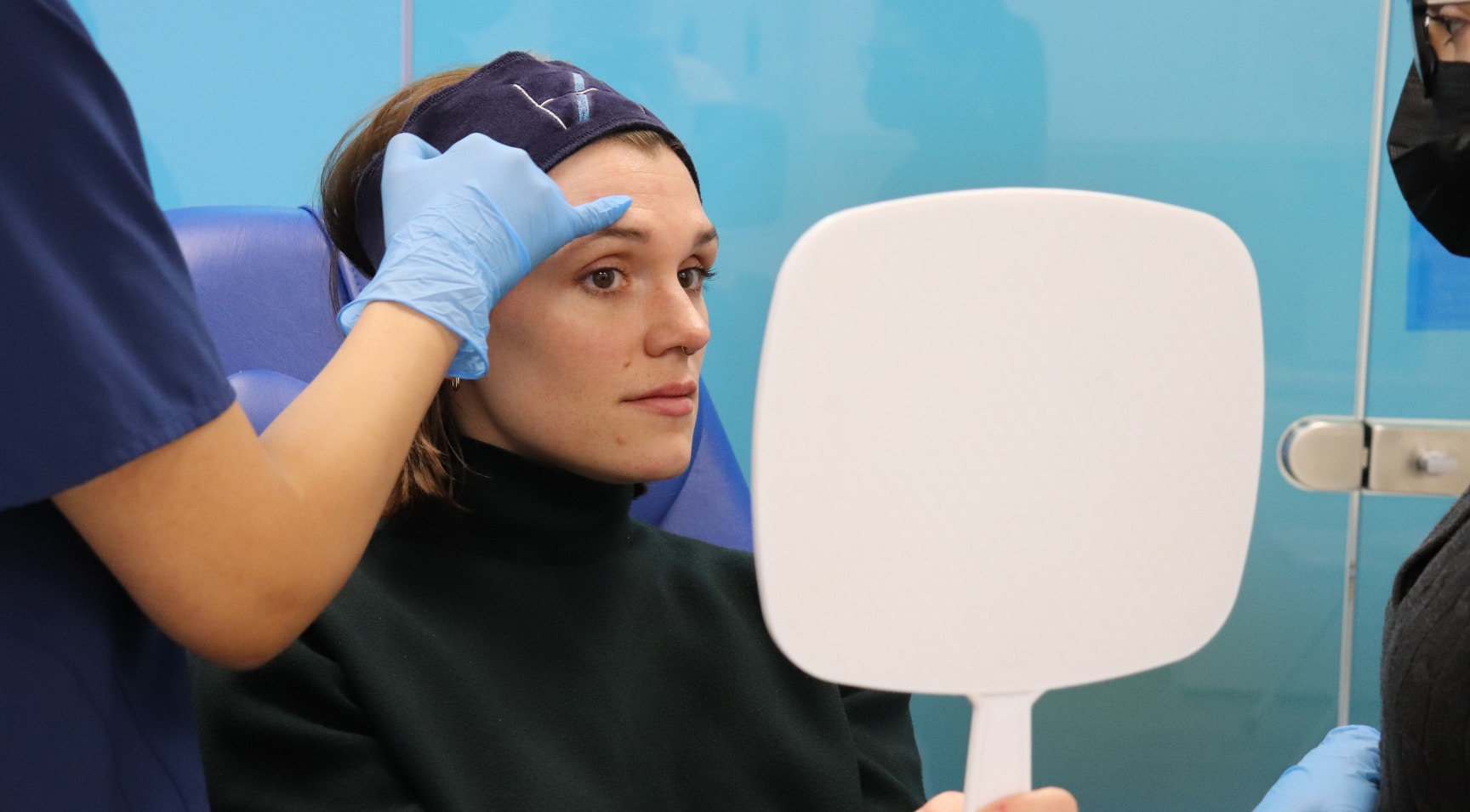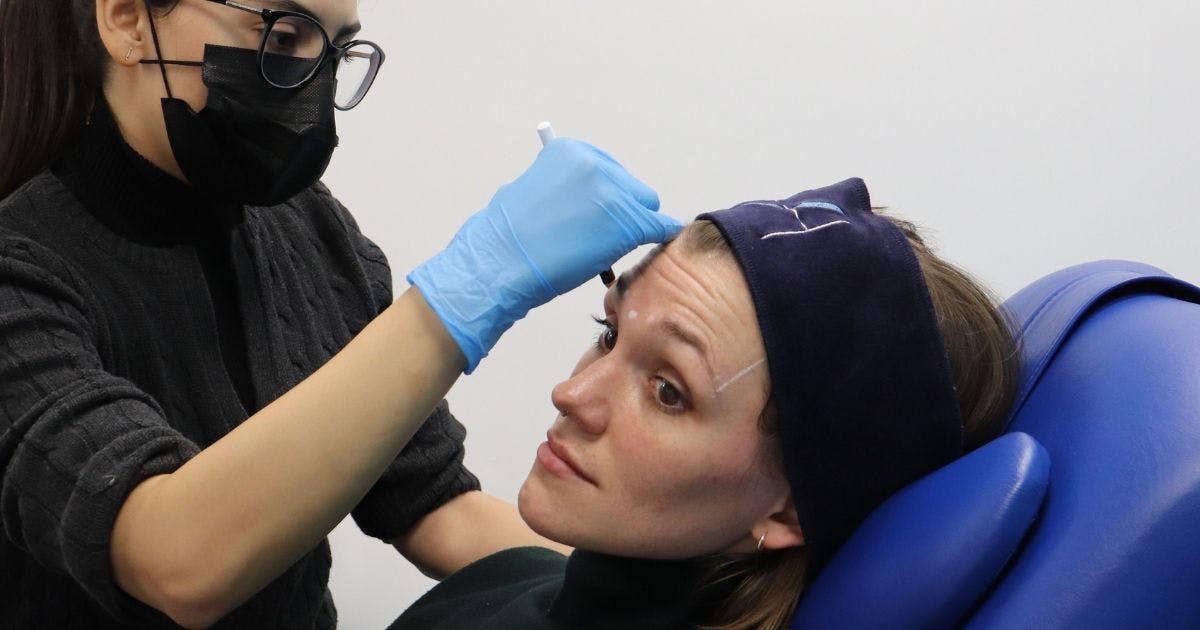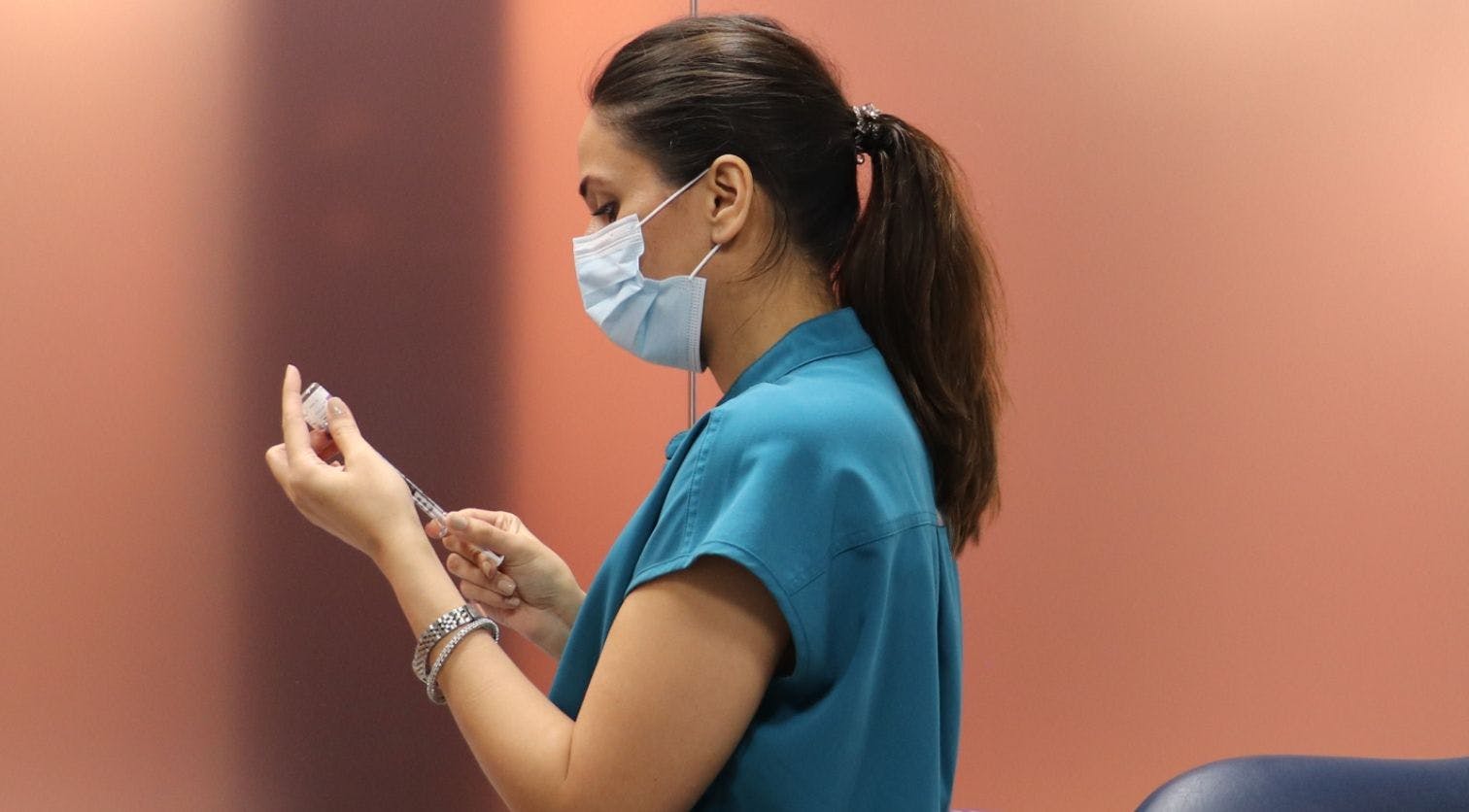Correcting Eyebrow Asymmetry with Botox

Dr Victoria’s injection techniques for correcting eyebrow asymmetry with botox is great knowledge for every aesthetics practitioner’s toolbox!
A clinical trainer at Harley Academy, Dr Victoria Russell shares her advice, including:
- The best botox injection techniques to treat wonky eyebrows
- What safety precautions practitioners should take
- Tips for new injectors when managing eyebrow asymmetry.

Managing one eyebrow that’s higher than the other
Dr Victoria explains, “A slight asymmetry in brow height is a common feature and is present in most people. If someone naturally has a much higher brow on one side than the
other, this may be caused by a muscle imbalance. This is where the muscle tone is stronger or weaker on one side.
“There are several muscles involved in eyebrow positioning. The frontalis muscle is responsible for elevating the eyebrows, whilst the procerus, corrugator supercilia, and orbicularis oculi play a role in their depression.”
You can find out more about this in our previous article on using toxin to lift one brow only.
How to correct eyebrow asymmetry
“When correcting brow asymmetry with botulinum toxin, it’s important first to assess
your patient’s eyebrow movements. Ask them to make dynamic upper facial expressions.
“Here, you can determine which muscles are under or overworking on the eyebrow. Also, which brow has the most favourable anatomical position? You can further evaluate if your patient has any risk factors for dropping the higher brow, such as hooded eyelids.
“It’s important to involve your patient in this decision-making, as they may express a preference,” Dr Victoria advises.

The best botox injection techniques to lift the brow
“To lift the brow, we can treat the glabella complex which acts as depressor muscles, as well as the orbicularis oculi at the tail of the brow,” instructs Dr Victoria.
“When treating the frontalis fibres above the brow, you can omit toxin treatment to this area. Alternatively, you could keep the doses low and the injection points high.”
Other areas that can be treated to enhance brow botox results
“Toxin treatment to the frontalis muscle above the brow that sits higher may also help to further improve asymmetry.”
Dr Victoria further states that “treatment to the rest of the lateral orbicularis oculi can enhance the aesthetic outcome in some patients.”
Safety precautions aesthetics practitioners should be aware of
“When injecting toxin, it’s important to use the correct doses and inject them at the correct depth to avoid complications,” she recommends.
“It’s also important to understand the anatomy and the synergy between the muscles. For example, the frontalis muscle and glabella complex are synergistic muscles. It’s not advised to treat the frontalis muscle without treating the glabella complex.”
Dr Victoria also notes that this is “because it can lead to an unfavourable change in eyebrow position. The patient will experience a brow heaviness, which they will not thank you for!”

How to avoid common mistakes when tackling eyebrow asymmetry
Dr Victoria lists three aspects new aesthetics practitioners should be proficient in when treating eyebrow asymmetry, to avoid common mistakes.
A better understanding of facial anatomy
“You need to have a good understanding of the muscles involved in upper facial expression and the synergy they have with other muscles.”
Injecting botox at the right depth
“For example, injecting too deep into the upper fibres of the orbicularis oculi and too close to the orbital rim can cause complications. This may cause an impact on the levator palpebrae superioris and potentially cause lid ptosis!”
Consider distinct facial anatomy and gender differences
“There is no one-size-fits-all-all with toxin treatment. Examine your patients thoroughly so you understand their expectations and goals. An in-depth consultation is important so you can tailor your toxin treatment to their needs and concerns.”

Develop your understanding and botox injection techniques
As Dr Victoria mentions in her interview, having in-depth knowledge and an understanding of facial anatomy is crucial! It can help you to avoid complications and undesirable aesthetic results, as well as advise patients effectively.
Our Core Training in Botox & Dermal Fillers will teach you the fundamentals of botox and fillers with one-on-one mentorship. You’ll learn to inject your own patients, under the guidance of an aesthetics specialist.
For a deeper understanding of injectables, anatomy and technique, take a look at our Level 7 Diploma in Botox & Dermal Fillers. JCCP-approved and Ofqual-regulated, our Level 7 Diploma is a postgraduate level qualification in aesthetic medicine.
During this training, you’ll learn how to conduct thorough consultations to understand your patient’s concerns. Furthermore, you’ll also sharpen your intuitive skills when it comes to advising patients what the best treatment plan is.
Toxin treatments are one of the first many aesthetics practitioners learn and start their practice with. As such, it’s important to get a thorough grounding in botox best practice from the outset. This will allow you to deliver reliable results and build patient relationships, which will grow your reputation as a safe and trusted injector.
Book a call with one of our Course Advisors to hear about our training courses.
All information correct at the time of publication
Download our full prospectus
Browse all our injectables, dermal fillers and cosmetic dermatology courses in one document
By submitting this form, you agree to receive marketing about our products, events, promotions and exclusive content. Consent is not a condition of purchase, and no purchase is necessary. Message frequency varies. View our Privacy Policy and Terms & Conditions
Attend our FREE open evening
If you're not sure which course is right for you, let us help
Join us online or in-person at our free open evening to learn more
Our Partners














STAY INFORMED
Sign up to receive industry news, careers advice, special offers and information on Harley Academy courses and services

